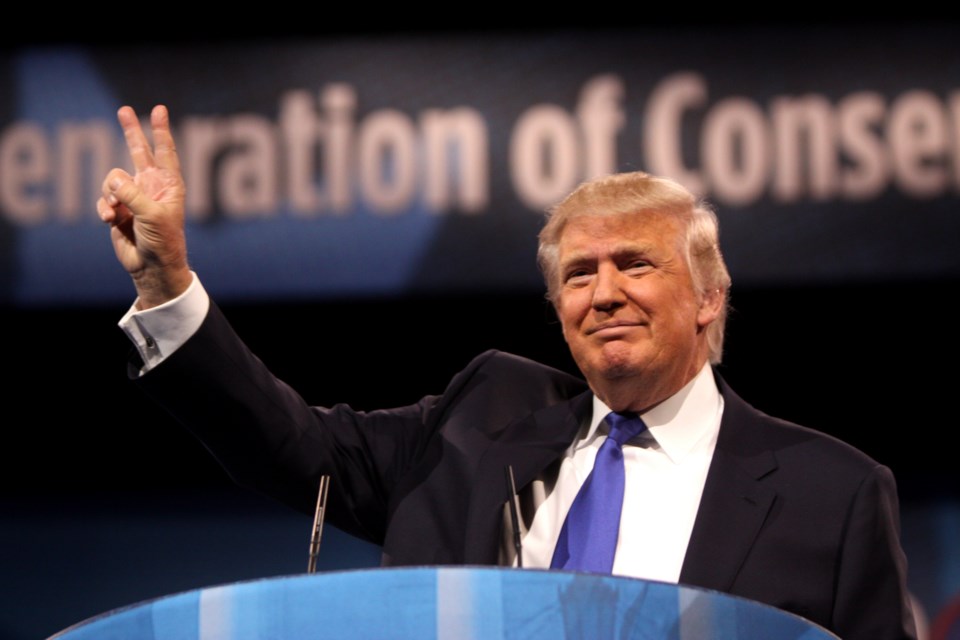Suddenly, the disruptor has been disrupted.
Sunday’s decision by U.S. President Joe Biden to withdraw from the race, endorsing and leaving Vice-President Kamala Harris as the presumptive Democrat nominee, is exactly the breathtaking move that would rattle Donald Trump.
He was banking on Biden, a vulnerable target about whom he could raise cognitive infirmity questions of fitness to hold the office. Now he is the old man who rambles, now his target is a younger woman of colour who will have a chance to display her presidential bona fides as she unleashes big-dollar donors amid polling numbers suggesting she’s more competitive.
Still, much now depends on whether Biden’s withdrawal has arrived too late, whether Harris has the jam to define her vision, whether her candidacy alters the mixture of swing states in the race, and who she strategically chooses to address them as she secures the nomination at the party’s convention.
Now, it is etiquette for political leaders never to talk presumptuously about how they’d deal with a candidate facing election elsewhere. Most likely Prime Minister Justin Trudeau is starting his family holiday in B.C. with some sense of relief about who his counterpart might be on the other side of the border.
But it is important to note that even the latest development in an extraordinary few weeks of the U.S. presidential race – a lopsided debate, a recognition of Biden’s difficulties and an assassination attempt on Trump – has built for the former president momentum Canadian leaders cannot afford to ignore. Waiting longer to prepare for Trump is only courting more difficulty later.
The Harris presidency would mostly be business as usual. The Trump return: anything but.
We would experience a much more aggressive Trump 2.0, a new form of the presidency abetted by courts laden by earlier appointees and overtaken regulatory agencies to wage fewer impediments to the Oval Office. It would be a muscular assumption of institutional and executive control with an aim to achieve home runs in four years on what it often swung and missed at in the earlier first term.
Even if we are told that on each trip to Washington our leaders dutifully speak to both Democrats and Republicans for safety’s sake to stress our important ties, our senior governments have operated in recent years as if Trump were a scourge to never return. The general harmony at our federal and provincial levels in economic, environmental and social policy approaches and spending practices – and the general alignment with the White House these last three years – has further lulled our leaders into little or no planning for regime change.
But they should not take Sunday’s sharp turn as a signal they need not steel themselves and pivot if they don’t want Canada to be one of the most decisive casualties of that next Trump administration.
Our two countries remain their largest trading partners, with US$1.95 trillion in their trade and investment relationship, and millions of jobs in the mix – two million in Canada, nine million in the U.S. by some estimates. But Trump has shown he rarely believes a deal can’t be further tilted his way. Even his best customers pay the price.
What could we realistically expect?
On the economy, it’s hard to know where to start with the horde of prospective impacts, even if B.C. has the country’s most diversified trading portfolio. There is bound to be a new wave of protectionism that will see tariffs imposed to the benefit of the domestic economy, in part to fuel personal and corporate tax cuts; some will stick, some will merely stall in resolution mechanisms, but all would harm our economy. Our free-trade deal will face a mid-term review, and under Trump it wouldn’t be pretty.
The cuts would render Canada even less competitive in attracting investment. The policies would likely reignite inflation in the U.S., with the usual questions of pursuing a lower dollar or lower interest rates, neither of them terribly helpful to us.
The protective quality would be an extension of America’s isolationism – its further distancing from NATO, its focus on One China with its indifference to Taiwan, and the cessation of support for the Ukraine war. A bi-product for Canada would be fierce pressure to bolster our defence commitments to the ever-elided target of two per cent of GDP if we want Trump’s safeguarding. The latest nebulous statements from the Trudeau government, and the non-committal ones from likely successor Pierre Poilievre, suggest we’d court a spanking.
The most troubling effect might be in Trump’s oft-stated vow, repeated at last week’s Republican National Convention, to rapidly deport migrants in the millions. There is nothing to suggest Canada is wrapping its head around a possibly grave humanitarian challenge of consequence. It would make our gyrations about recent sudden population growth, health-care capacity, and housing and school shortages seem comparably minor.
Our toes are swollen as a country that loves to kick the can down the road. Biden’s reluctant, almost grudging decision to pull out from a job he worked all his life to achieve should not be seen as any solution by those who worry about the return of Trump. It is just a modest step on a long road.
It is up to our leaders to fight to be seen positively in the next administration, no matter who runs it – and if it’s another Trump presidency, to be an ally who won’t be trampled.
Kirk LaPointe is a Glacier Media columnist with an extensive background in journalism



